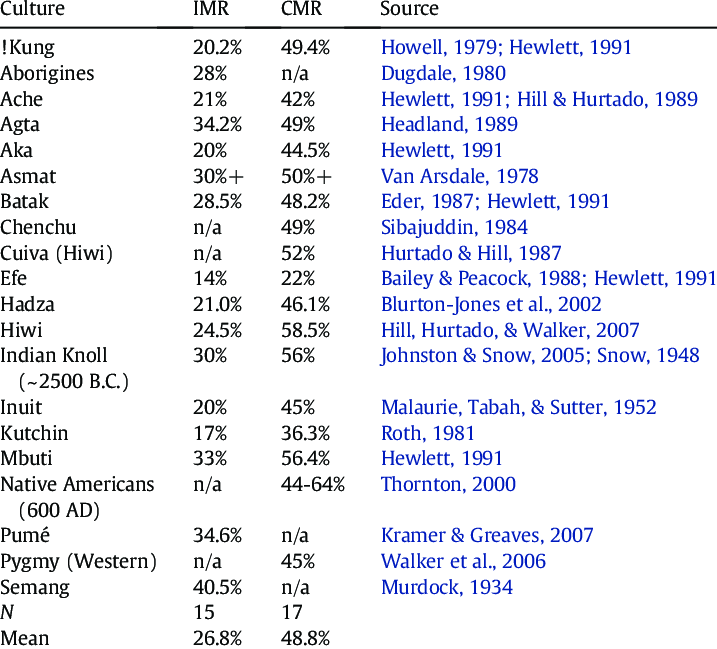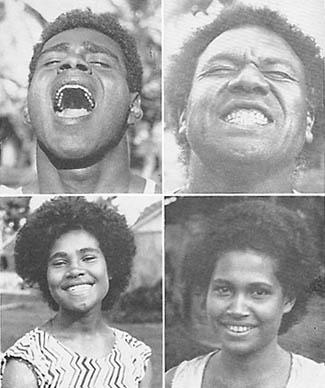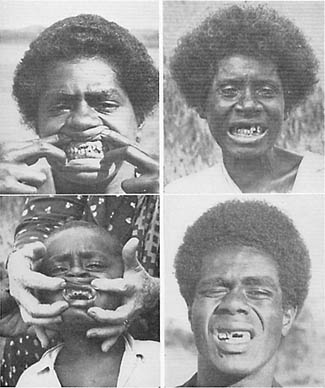There’s a general progression myth, that we humans today are the most advanced we’ve ever been in our history.
It’s probably true when it comes to technology. Although if you’re like my dad and you watch Ancient Aliens then probably this point is debatable too.
Most people also think this applies to the health of human beings in the modern world. Life expectancy is the longest it’s ever been, therefore humans are the healthiest we have ever been.
Unfortunately for countries like the US, life expectancy has been dropping since 2014.
Life expectancy also doesn’t necessarily give an indicator of general health throughout a person’s life. Modern medicine may be very good at keep being alive, but has it helped with helping people to thrive? How does our health compare to our hunter-gatherer ancestors? Before civilisation started.
Asking these questions I have four points:
- It is a myth that all hunter-gatherers died really young.
Infant and child mortality rate among hunter-gatherers was very high. This dragged down the average life expectancy of these people. But when you measure life expectancy after fifteen years old, their life expectancy was around 70 years old. Not too different from life expectancy today.
For comparison with the numbers in the chart below, infant mortality rate today is less than 1%.

So it’s no wonder that many people make the assumption that hunter-gatherer all died young. When you take the average life expectancy, you often get a figure of 25 for hunter-gatherers. It was this extremely high infant and child mortality rate that pulled it down.
It’s worth bearing in mind this 70 years of age was done without emergency healthcare, ambulances or any modern medicine. For comparison, the US life expectancy is 78.5 years. Life expectancy in India is 69.1 years..
There’s also evidence that hunter-gatherers had superior physical health well into their old age. I’ll detail this in the below points.
2. During the transition from hunter-gatherer to farming, average height dropped significantly
In an essay by Jared Diamond titled ‘The Worst Mistake in the History of Humanity‘ he says:
One straight forward example of what paleopathologists have learned from skeletons concerns historical changes in height. Skeletons from Greece and Turkey show that the average height of hunger-gatherers toward the end of the ice ages was a generous 5′ 9” for men, 5′ 5” for women. With the adoption of agriculture, height crashed, and by 3000 B. C. had reached a low of only 5′ 3” for men, 5′ for women. By classical times heights were very slowly on the rise again, but modern Greeks and Turks have still not regained the average height of their distant ancestors.
He makes the case that agriculture was the worst mistake humanity ever made, and that agriculture was only adopted out of necessity.
The evidence suggests that the Indians at Dickson Mounds, like many other primitive peoples, took up farming not by choice but from necessity in order to feed their constantly growing numbers. “I don’t think most hunger-gatherers farmed until they had to, and when they switched to farming they traded quality for quantity,”
Hunter-gatherers appeas to have traded what was a very rich and varied diet for a poor and limited one. Switching from eating mainly protein and fats obtained from wild animals, to eating a diet that was high in only a few staple crops like wheat, corn or potatoes seems to have contributed to that sharp drop in average height.
3. Hunter-gatherer’s had superior teeth, even without toothbrushing or flossing
Dr. Weston Price was a dentist who travelled the world studying the dental health of indigenous tribes that were still in existent at that time. He wrote a book called Nutrition and Physical Degeneration.
He compares the dental health of indigenous people still eating their traditional diets, compared with the dental health of the same group of people who had begun to assimilate with the Western world and had started to eat their foods.
The photos in the book show clearly the differences between the traditional way of eating versus the influence of the Western diet.


Dental health today is still appalling. How many kids in your class had to wear braces to straighten out their teeth? How many had to get tooth fillings?
For me I had to get multiple fillings when I was a child. Although I didn’t need to wear braces. But certainly it was more common that people had dental issues than not.
Weston Price observed that the people following their traditional diets suffered almost no tooth decay, no gum disease and their dental arches were developed very well with no crowding or misaligned teeth.
These people also would use no toothpaste/toothbrush, no flossing and had no access to dentists.
4. The Myopia ‘Epidemic’
There is a similar story in studies done comparing the eyesight of indigenous people before contact with Western culture and their subsequent eyesight in their children after they were assimilated into Western culture.
In this study on the Inuit, researchers found rates of myopia four to eight times higher in young Inuits aged 15 to 30 than in the older population.
Our data support the hypothesis that schooling is an etiologic factor in the production of myopia. The females, with their greater frequency of myopia, were more likely to have attended school regularly, their mean number of years registered in school was also slightly greater.
Opticians today still class myopia as a ‘genetic’ condition. Yet for this study on the Inuit it is hard to see how myopia could develop so rapidly within a single generation. The parents had very low incidence of myopia (3% for males over 30 and 5% for females over 30). Compared to 18% for males between 15 to 30 and 43% for females between 15 to 30.
Some Concluding Thoughts
These are just a few of my selectively biased data points. It seems clear to me though that traditional diets of hunter-gatherers are far better than modern diet recommendations today.
This article comparing the life expectancy in Hong Kong (which is now the highest in the world) and meat consumption compared to life expectancy in India and their lack of meat consumption is telling.
Hunter-gatherers prized animal fats and organ meats, as observed by Weston Price. Pregnant women were given nutrient rich foods like oysters or fish eggs in order to make “perfect babies”.
What the data from Hong Kong seems to suggest is that this trend of hunter-gatherers consuming a lot more animal foods does indeed promote greater health in human beings.